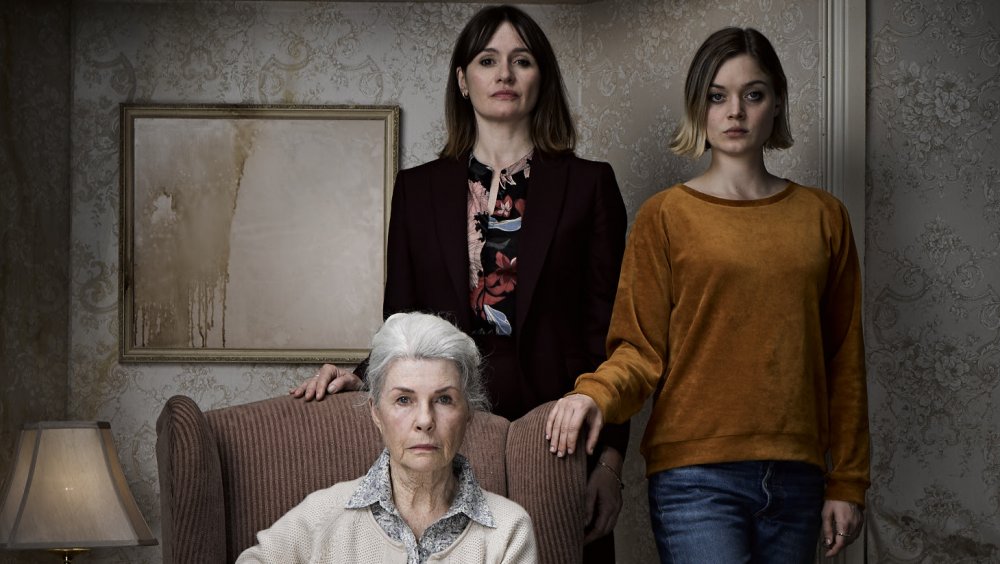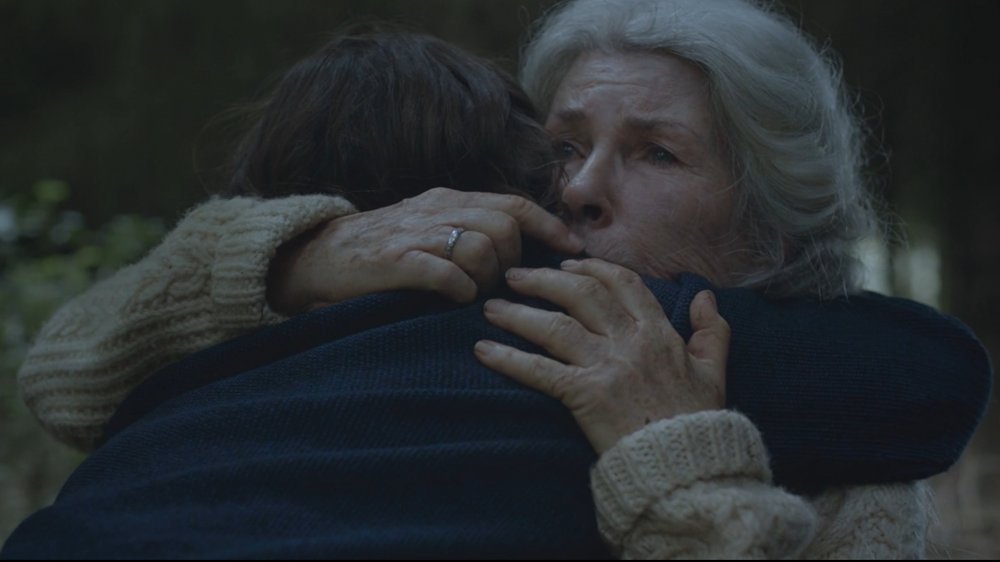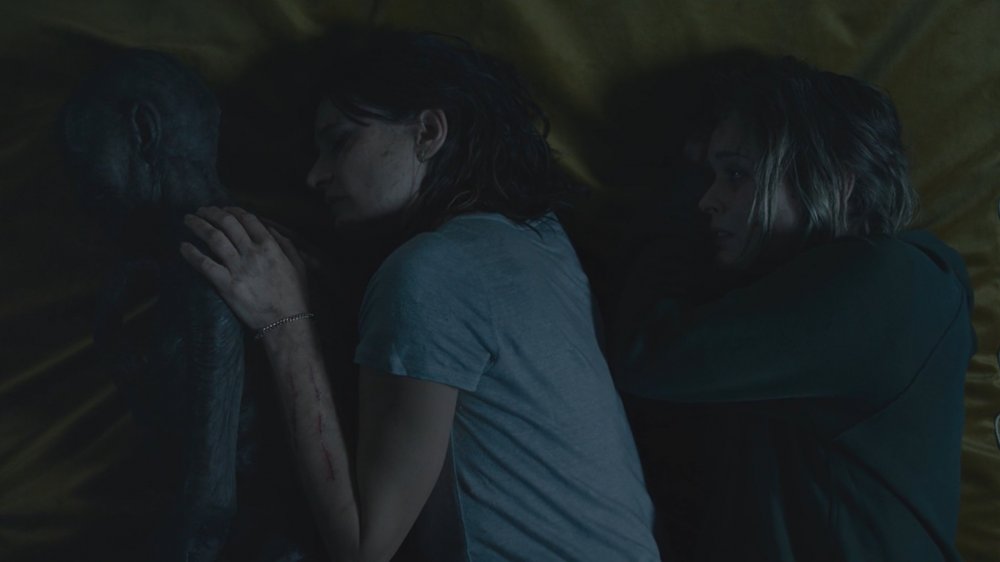The Ending Of Relic Explained
A new art-house horror movie, Relic, is getting a lot of attention right now. Like a lot of the most popular indie horror films of the last decade, Relic uses horror as a release valve to help audiences both understand and cope with real-life fears that have no corresponding real-life points of obvious catharsis.
Similarly to the way both The Babadook and Hereditary tackle generational mental illness, Relic is an exploration of the generational impact of dementia. At its core, Relic is about a mother and daughter, Kay (Emily Mortimer) and Sam (Bella Heathcote), who travel to the home of their family matriarch, Edna (Robyn Nevin), after she goes missing. There, they discover that a supernatural presence has taken over her house.
The supernatural entity that takes over the house represents Edna's dementia. The end provides a kind of cathartic moment for all three women, but it's not so pat or simple as "the darkness is vanquished." Here's a breakdown of how Relic ends and what that ending means.
Relic is about living with generations of dementia
Throughout the film, Kay has dreams involving the stained glass window in the front door, and the home it was originally attached to. Her family has lived on the same property for a very long time, and a much older great grandparent already dealt with dementia and died gruesomely. As a result, there's a kind of specter hanging over the house, a scary story based in truth that lives in the pit of Kay's stomach and that she can't shake.
Some fears go away as we get older, but the reality of dementia — divorced of any familial folk tale — is still scary. It's about losing control and losing who we are. By the end of Relic, Kay and Sam are running from Edna because she's ceased to be who she was and has become a monster — but it's not that simple. Edna is still Edna, she just has an illness that neither Kay nor Sam wants to face. The end of Relic is about what happens when you stop running.
Relic is about accepting that dementia is inescapable
Sam finally escapes Edna's home, but Kay chooses to stay. What literally happens is that, after Edna's violent freak-out brought on by her dementia, Kay carries Edna up to her bedroom. Sitting on the bed, Kay begins to remove Edna's skin, the outer layer of who she used to be. Beneath that is a blackened, ghoulish figure.
We see the shadow of a similar figure in the background throughout Relic, and it's meant to scare us. Edna, though scary in a way, is mostly just tired, tired of being alive and tired of hanging onto an identity that's fast slipping away.
Edna is less scared because, in this moment, she accepts the inevitability of death — not just the death of the body but of the mind. Sam returns and all three women lay in the bed together, back to back to back. Sam looks at Kay's back and sees a tell-tale black spot. That spot is an early sign that Kay, too, will suffer Edna's fate. Edna already knows where her life will lead and now Sam knows it, too.
As they lay in the bed together, Edna, Kay, and Sam share each other's burdens. They each have cared for someone with dementia, and they each will likely suffer from it. The end of Relic is about embracing each other not out of hope, but out of care and out of survival. It's tremendously sad, but potently touching.
Relic is availble to stream on VOD now.


